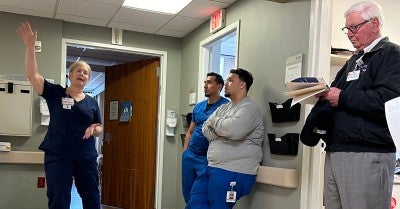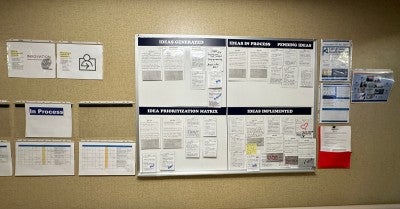Consistency and collaboration
Using this innovation framework, the LVH–Pocono cardiovascular telemetry unit team transformed its unit in several ways. The biggest project was a redesign of its supply closets. With two closets on either end of the floor, staff members used to walk from one end of the unit to the other to get equipment for patient care. By reorganizing the closets based on which supplies are used most, they are now laid out in the most efficient way for staff.
Since the program began, the cardiovascular telemetry unit has completed the most projects out of all three nursing innovation units. “We all work together,” says Farah Carter, Patient Care Manager. “This program allows nurses to give us their input on a regular basis so their voices are heard.”
Other projects are simple fixes and show how nurses are always advocating for patients. After hearing feedback from patients about the availability of snacks and food, the team purchased a refrigerator and stocked it with a variety of tasty, nutritious meals. Now patients and guests have options when the kitchen is closed.
“We see patient satisfaction scores go up the more we address things like this,” says Lissette Lanigan, BSN, RN, Director of Clinical Services at LVH–Pocono’s cardiovascular telemetry unit.





